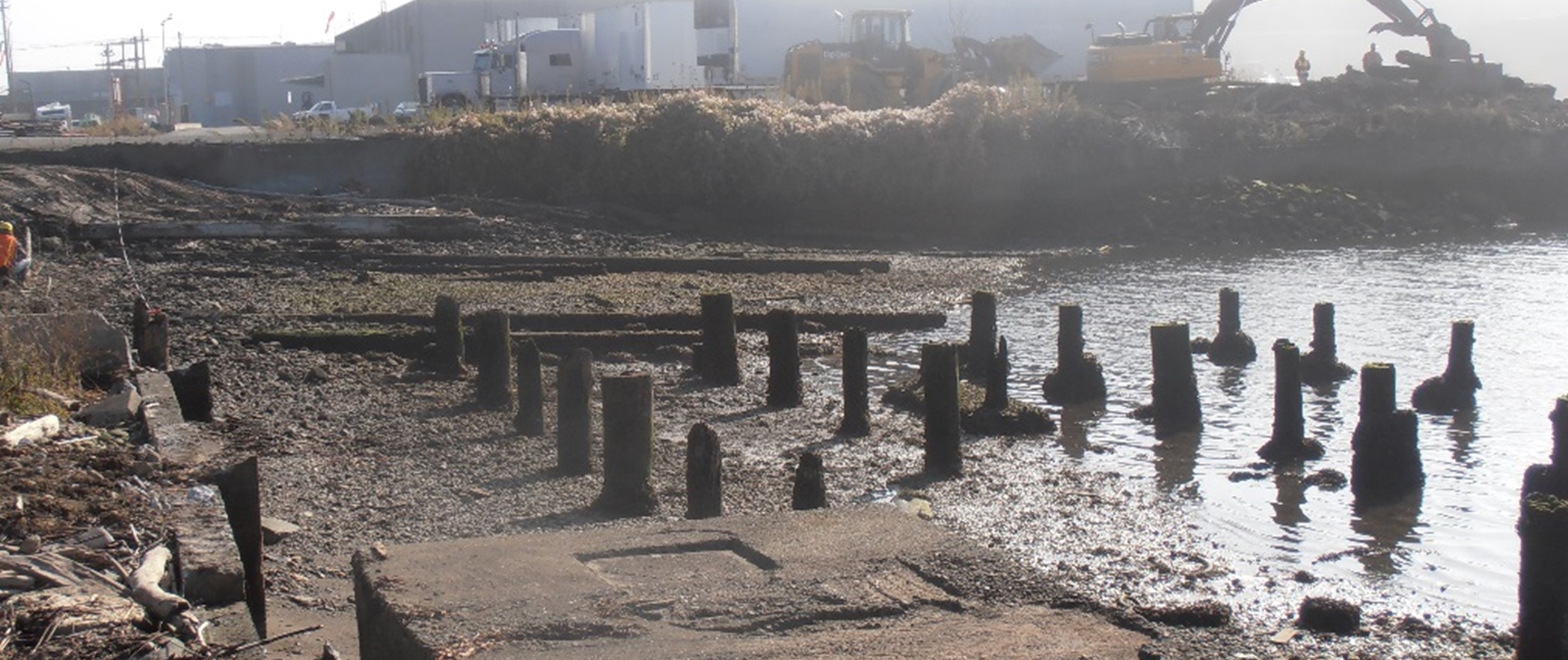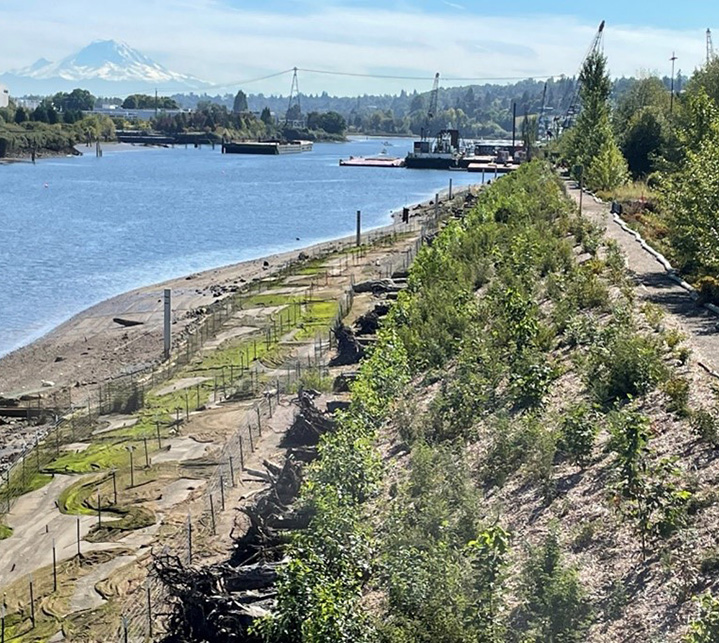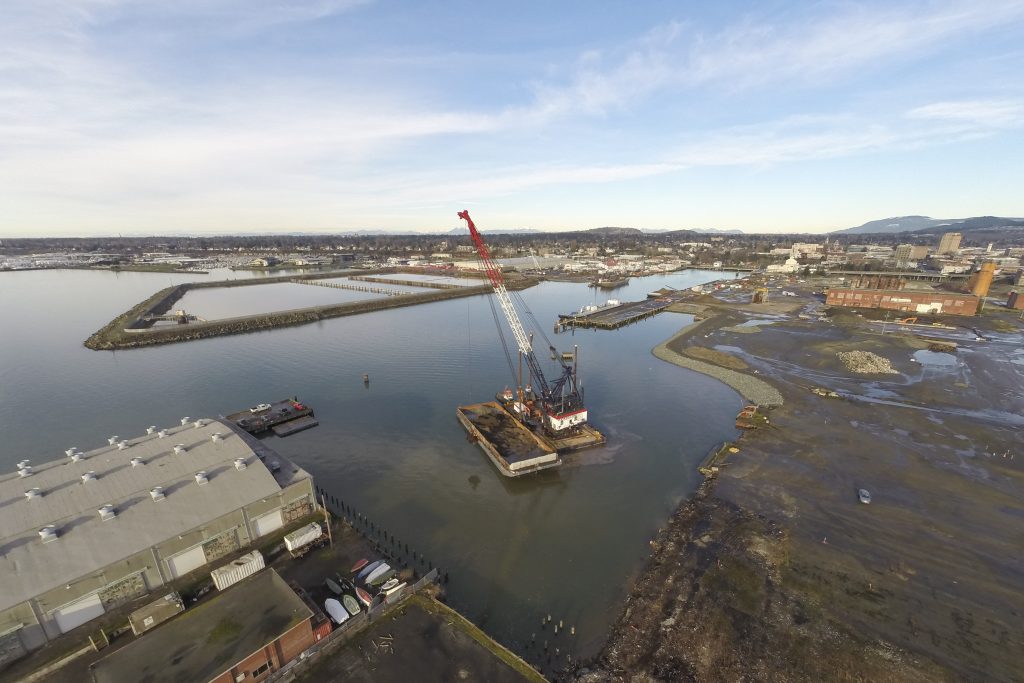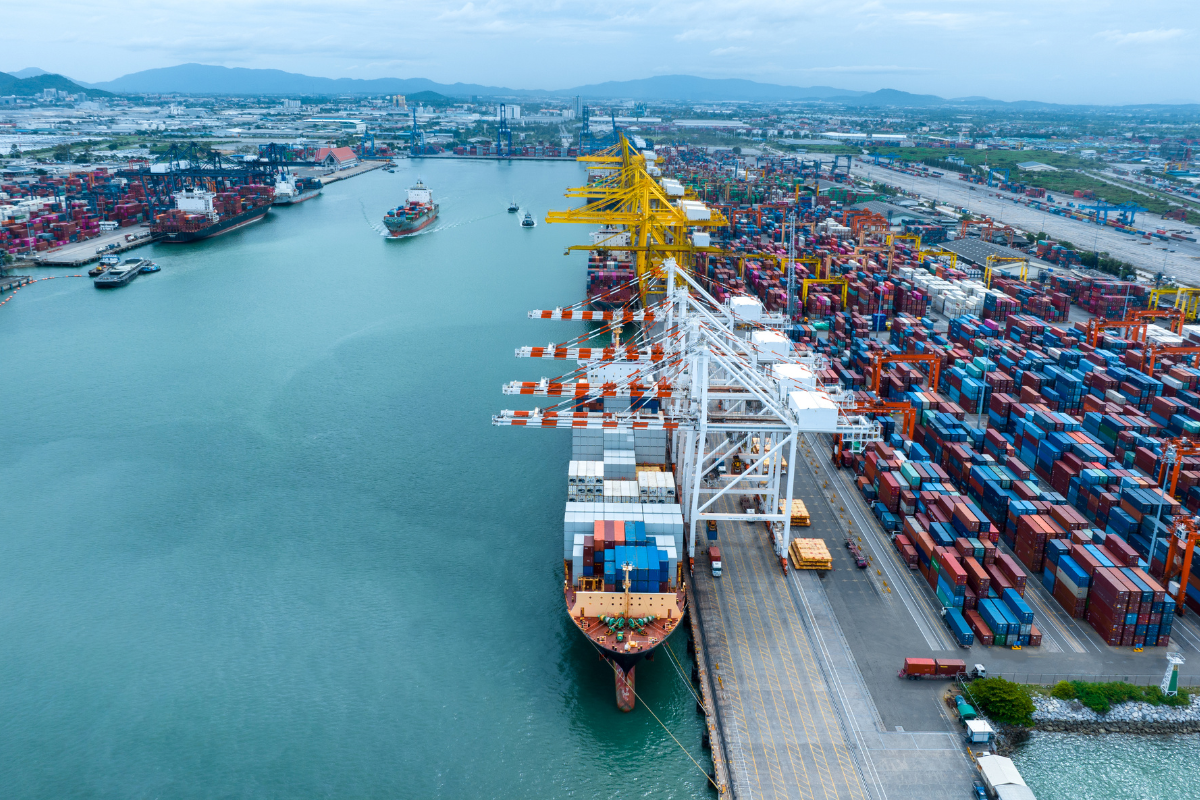Mitigation and Remediation in Port Development Projects: Balancing Economic Growth with Environmental Resource Management
Port development and productivity play a crucial role in economic growth and regional connectivity. As the industry expands, and the technology to manage it advances, ports must adapt or risk losing traffic to competitors.
Prioritizing facility upgrades and redevelopment projects while modernizing existing ports is key for keeping up with the evolving industry. However, certain types of port development projects may result in environmental impacts, including the loss or reduction of wetlands and open-water habitats. Because of this, ports must balance their commercial and economic goals with responsible environmental resource management in meeting regulatory requirements throughout the project planning, design, and permitting process.
Ports are often the economic epicenter of a city or area, linking commerce and production to a global trade economy.
Minimizing Environmental Impacts through Mitigation and Remediation
Federal, state, and local regulations require development projects to avoid or minimize environmental impacts as much as possible while mitigating unavoidable outcomes. Ports are increasingly finding ways to integrate environmental mitigation and remediation measures into the planning, development, construction, and long-term monitoring phases of a project.
By taking a comprehensive approach, ports can satisfy evolving environmental regulations by cost-effectively integrating remediation and mitigation into the port development process. Many port managers, commissions, and councils recognize the value of mitigation and restoration programs, which often involve cleaning up contamination and restoring habitat to maximize environmental benefits. In many cases, these actions have provided a new source of revenue by generating mitigation credits that allow redevelopment opportunities to be fulfilled.

All adverse impacts must be mitigated by providing compensatory natural resources in addition to wildlife habitat functions and values.
Challenges and Considerations for Port Development Projects
Several potential challenges should be considered when planning, permitting, designing, and implementing port development projects. Managing these kinds of projects can be complex, as they involve multiple elements: navigation channels, shipping berths, terminals, and sea walls. Along with multiple project elements, port leaders manage a fleet of stakeholders, including the port authority, the public, regulators, and contractors.
To help offset these competing interests and regulatory and technical challenges, integrating mitigation and remediation measures can provide significant benefits, such as the following:
- Protection and conservation of the environment
- Incentives for agencies and communities
- Opportunities for mitigation credits to ease the permitting process for future port development projects
- Built-in mitigation for habitat impacts during construction
Due to environmental regulations, mitigation and remediation will continue to play an important role in the future of port and waterway modernization decisions. Removing contaminants from a site is not always enough to prevent further damage. To create lasting change, it is often necessary to also restore habitat that has been lost or degraded over time.
A Framework for Effective Port Development Strategies
Navigate Grant Opportunities and Funding Options: When planning a redevelopment project, seek opportunities to take advantage of available grant funding and consider including a habitat restoration component in the project, especially if grant funding is available.
Different types of grants are available at the federal and state levels for development, facility maintenance, remediation, and habitat mitigation. Ports should have staff available to evaluate these opportunities or retain a professional services firm to assist with identifying and applying for grants.
Compartmentalize the Permitting Process: Permitting is often a complex and time-consuming process, especially for large-scale projects like port development. A permitting compartmentalization strategy is key to avoid jeopardizing project schedules with delayed permit approvals.
It is critical to spend sufficient effort planning a project so it can be communicated clearly to permitting agencies and is inclusive of all elements of work. A matrix of necessary permits, associated agencies, timeframes, and submittal requirements should be developed during the project planning phase, as design decisions typically need to be vetted to the 30% design level prior to submitting permit applications.
The project team should have a clear understanding of the nexus between federal, state, and local agency permits and how the processes at these levels interact with one another.
Understand Optimal Mitigation Practices: It is important to choose the best mitigation method for each remediation project, such as the following:
- Concurrent mitigation is the practice of mitigating as needs arise. Even though this can be designed for specific functions, it may delay proposed development while mitigation is negotiated.
- Advance mitigation is implemented before adverse environmental impacts occur and is designed to proactively address the needs of future development projects by a single project sponsor. This method expedites the development permitting process but requires outreach and negotiation; regulatory agencies must agree on the number and type of credits that restoration activities will generate while also deciding which of the sponsor’s development actions will be eligible to use the credits.
- Mitigation banking is the restoration or creation of habitat sites to generate credits for sale to other parties. Credits are generated through habitat preservation and restoration and then sold to other parties to offset ecological loss from other projects. This can be more cost-effective and more ecologically beneficial than creating individual mitigation sites for multiple projects.
Work with Regulatory Agencies: State or federal cleanup regulations will dictate any cleanup requirements, which can also integrate with development planning. Entities like the U.S. Army Corps of Engineers, state natural resource agencies, and the National Oceanic Atmospheric Administration (NOAA) Fisheries will review restoration actions and determine the number of credits the project will generate.
Credits given for each habitat type created, restored, or preserved can be used for future development projects as part of an advance mitigation program or sold to generate revenue as part of a mitigation bank.
Enhance Public Access Opportunities: Ports can build positive relationships with communities and stakeholders through cleanup, restoration, and opportunities for the public to access and experience restored shoreline areas. Many ports are committing to equity and social justice initiatives, which can be paired with mitigation and restoration planning to better serve the surrounding community.
Engage Port Stakeholders and the Community: Strategic planning for port development projects must take a comprehensive and holistic approach that engages all stakeholders in a meaningful way. This approach is essential to ensuring a project meets the community’s needs and has buy-in from key groups.
It is also important to consider the project’s impacts on the environment, economy, and social fabric of the community and to relay these considerations effectively.

Mitigation banks can consist of one large habitat restoration site or a group of smaller sites to generate credits that landowners or developers can purchase to offset environmental impacts.
Case Study: The Port of Bellingham’s Whatcom Waterway Remediation
The Port of Bellingham is located in Whatcom County, Washington—a major maritime hub in the Pacific Northwest. It is the largest port on the Puget Sound and the only deepwater port between Seattle, Washington, and Vancouver, British Columbia.
Historical industrial activities resulted in contamination of sediments within and surrounding the Whatcom Waterway, an active waterway managed by the Port of Bellingham and used for commercial operations, including the transfer of bulk materials, boatyard operations, and vessel moorage and public access for recreational use.
The Washington State Department of Ecology approved a cleanup action plan and consent decree for the waterway in 2007, setting the stage to begin one of the state’s most significant marine cleanup projects. The project called for the removal of more than 700,000 cubic yards of contaminated sediment and debris from both the Whatcom Waterway and the 37-acre Aerated Stabilization Basin (ASB) that was constructed by the Georgia-Pacific Corporation to support management of process water generated at the former mill site adjacent to Whatcom Waterway.

Anchor QEA led planning, environmental permitting, and shoreline stabilization efforts to support the successful remediation of the Whatcom Waterway for future industrial and recreational use.
The first phase of this project was completed in 2016, accomplishing the following:
- Remedial dredging of more than 100,000 cubic yards of contaminated sediment
- Construction of engineered sediment caps (including placement of sand, gravel, and riprap armor material)
- Management of dredge residuals to achieve cleanup requirements
- Incorporation of habitat improvements to make the project self-mitigating
The second phase is currently underway and scheduled for construction between 2026 and 2029, and includes the following elements:
- Remedial dredging within the U.S. Army Corps of Engineers’ navigation channel adjacent to the Port of Bellingham’s deep draft shipping terminal facility
- Remediation of 370,000 cubic yards of contaminated sludges within the ASB
- Connection to Phase 1 cleanup remedies
- Construction of a nearshore confined disposal facility for more economical management of contaminated sediments
- Coordination for port redevelopment and land use considerations and commission priorities
- Development of an advance mitigation program by adding habitat restoration elements to the project to offset project needs and generate credits that will be reserved for future port use
Both phases of the project received grant funding from the Washington State Department of Ecology. Construction of the confined disposal facility in Phase 2 will create approximately 13 acres of upland and waterfront land within the ASB that will be designated for future use to support the local marine trades industry. Over 10 acres of new aquatic area and restored nearshore benches will provide high-quality fish habitat and generate mitigation credits.
Whatcom Waterway provides a unique example of how a large-scale sediment remediation effort can incorporate on-site management of contaminated sediments and support future land use and redevelopment—all without compromising the port’s economic growth or environmental health.
In addition, the project provides further insight on how effective mitigation and remediation strategies can provide benefits to port development efforts. The Whatcom Waterway plan offered significant cost savings with its sediment management approach while presenting opportunities for beneficial re-use of material and providing cost-effective mitigation credits to offset future port needs.
Ultimately, as the world becomes increasingly interconnected, the development of port facilities will continue to be an essential component of economic growth. Integrating mitigation and remediation strategies into this process proves to be the most effective way to minimize environmental impacts while leading port expansion.


